Editor's note: We offered this blog as a platform to four HDL Global participants who are documenting the event for everyone to get a glimpse of how things went down. This is one such post by Rory Hyde.
The further into Helsinki Design Lab Global I went, it became increasingly clear that there would be no easy takeaways. This was not your typical conference where a group of specialists come together, read out papers, and gently propel a subject forward. The theme 'Government Meets Design' brought together two groups of people that rarely cross over, and now that the dust has settled, it's clear to me that this mixing was the most important contribution.
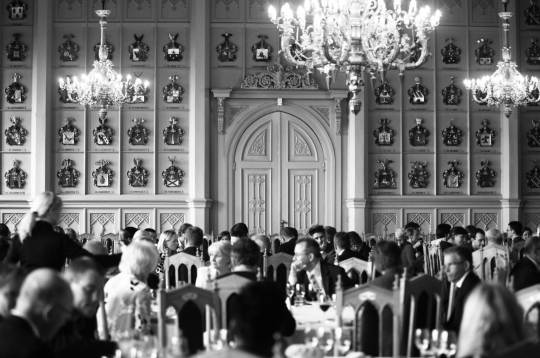
Dinner at the House of Nobility
To enable this mixing to occur, the HDL team at Sitra produced an excellently orchestrated series of presentations and discussions over the three days. It's of course impossible to do any of the speakers justice in a blog post, but as I and my fellow documenters were tasked as the 'eyes and ears' of this invite-only event, to expose the thinking and ideas beyond the 120 participants, I'm going to try to be comprehensive.
Needless to say, these reflections come from my own particular perspective as an architect; an architect trying to come to terms with what being a 'strategic designer' means. What kinds of skills might we need to cultivate in order to play the role of designer within an organization or government? And how might organizations or governments be more cooperative with designers?
To get at these questions, I will focus on concrete examples of projects discussed throughout the presentations. I hope you enjoy this express trip through HDL 2010.
Day 1
The introductory event takes place in the appropriately named 'House of Nobility'. We are seated in a huge timber-lined volume, surrounded by all manner of elaborately carved coats of arms.
After entrees and a brief introduction by Marco Steinberg there is a screening of the short documentary film 'Tending the Garden City' directed by US architect Helen Han. It examines the waste problem in Bangalore, where municipal collection cannot keep up with demand, recycling is uncommon, and separation of waste is left to an underclass living on huge dumps outside the city. With a deceptively simple and affordable recycling container developed by Daily Dump, led by Poonam Bir Kasturi, this excess of waste is turned into a localised source of value. Daily Dump is a fantastic example of the power of strategic design, and explored in depth by the HDL team in this case study.
Part design research, part investigative journalism, Han shows the use of film as a critical tool for the strategic designer. It can build a narrative around research and also get directly to the human face of the problem and solution, giving shape to a conversation.
Next up is an informal chat between Alejandro Aravena, principal of Chilean architectural practice Elemental, and Helsinki Minister for Housing Jan Vapaavuori, moderated by Monocle magazine's Tyler Brûlé. Aravena's social housing work in Chile is an almost archetypal strategic design project, and is also written up in detail by the HDL team. Mixing systems thinking, rigorous research, political imperative and economic constraints, Aravena's 'half of a good house' approach cuts across policy, social need, and the role the designer can play in interfacing between the two.
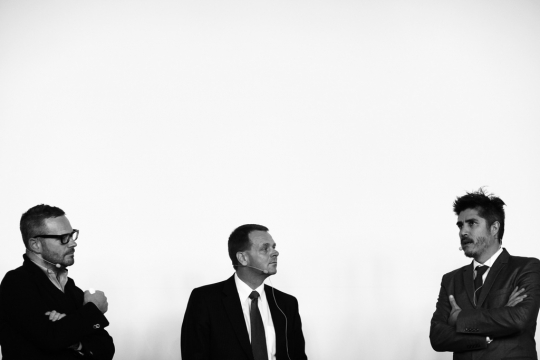
Tyler Brûlé, Jan Vapaavuori and Alejandro Aravena in conversation.
More interesting, regarding the overall theme 'Government Meets Design', is Aravena's practice model. Elemental was co-founded by Andrés Iacobelli, who holds a degree in public policy, and is now Secretary for Housing in Chile. Simply by the implicit skills and roles of its founders, Elemental is a bridge between design and government; a relationship that has placed the practice in a central role in the reconstruction efforts following the Chilean earthquake in February this year.
For desert, local architect Tuomas Toivonen of NOW served up a potted history of social housing in Europe, from Ebenezer Howard's Garden City, Le Corbusier's Ville Radieuse, to the crumbling dystopia of Paris' Banlieus. If all this sounds pretty dry, I should mention it was delivered in a rap. Yes, rap. With this, Tuomas held up his end of the bargain as a 'designer' - the crazier, and more creative side of the design meets government split.
'U = Utopia' film clip by Tuomas Toivonen
Day 2 - Morning
Day two begins in the equally elaborate House of the Estates. Top marks to Sitra for moving us around the city to different venues instead of locking us in a fluoro-lit conference centre. Lined with chunky granite cobblestones, Helsinki is a great city to walk around, an experience made all the more pleasant by carefully positioned HDL people holding giant white balloons and offering directions.
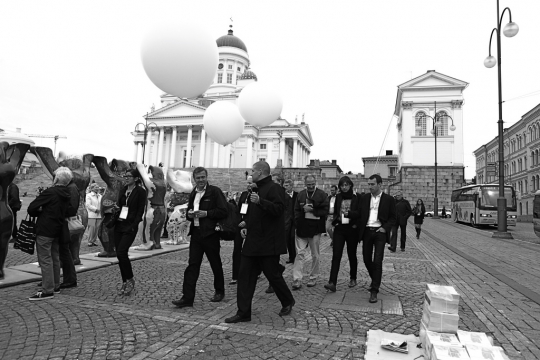
HDL guides with white balloon helping guests move between venues
I've discussed one anecdote of Marco Steinberg's introduction in an earlier post The Bus Schedule, Not the Building, which tries to get at this concept of 'strategic design', a topic elaborated upon in Marco's introduction letter, which is now also online.
Marco also presented the Stroke Pathways Project, a research project from his time at Harvard, described as 'applying strategic design to systems of care.' Through design tasks such as mapping, Marco and his team revealed some shocking realities about access to stroke care in the US. Despite the millions spent on facilities, due to the time-critical nature of stroke, only a tiny portion of the population would ever make it to these centres due to their geographic distribution.

Introduction to Day 2 by Marco Steinberg
By examining stroke at the meta scale, and reframing it as an issue of access, not just health, the Stroke Pathways Project provided decision makers with a more complete picture of the challenge faced, and enabled them to make more informed steps to address the issue. This is another fantastically clear case study that shows the strength and necessity of strategic design as an emerging way of thinking and practicing.
In another presentation that looked beyond assumed answers, Dr LaSalle Lefall, chairman of the President's Cancer Panel in the US, discussed his role as announcing roadblocks to the treatment and prevention of cancer. Efforts included the prevention of arsenic in chicken feed and the use of growth hormone in livestock; big picture challenges that have huge implications for the safety of the entire food system. Dr Lefall balanced this meta-view of the problem with an emotional plea to consider first and foremost the 'patient as the object of our affection', stating that this empathy is 'the hallmark of the medical profession' and perhaps other professions as well. A sobering reminder of what is really relevant.
Business consultant Darrel Rhea followed up with a tour of innovation in 20 minutes. Rhea's presentation highlighted the importance of leadership support in driving innovation, and that although radical thinkers are critical, if positioned in the wrong part of an organization, efforts to initiate change will face stiff resistance. In a nutshell, "social dynamics are more important [to innovation] than technical ones."
Nick Mabey, CEO of E3G, offered one of the most instrumental bridges between 'government' and 'design'. As a former senior advisor to the UK Prime Minister's Strategy Unit, Mabey is well versed in the politics of decision making. His presentation titled 'Why muddling through wont do,' highlighted the need for shepherding a proposal through the elaborate institutional hoops of policy, regulation and permissions.
Coming from my own experience as an architect, this seemed like a constructive alternative to complaining, something architects seem so fond of doing. Instead of complaining about the council, the planners or the residents when a scheme gets stuck, Mabey suggests we instead learn to play the politics; to carefully navigate our proposals through these systems to achieve the desired result. Perhaps this process could even be viewed as part of the design problem itself.
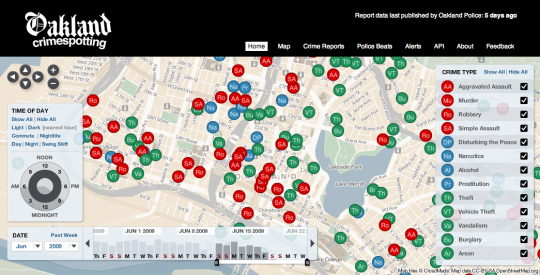
Stamen's Crimespotting: an interactive map of crimes in Oakland, California
To round out the morning, Eric Rodenbeck discussed the role of visualisation through examples of his work at Stamen. In particular, the Crimespotting project captures most explicitly the important role of design in interfacing public data. By mapping reported incidents of crimes over a map from a period of time, this isolated data forms a valuable resource for policy makers, business owners and residents alike. The visualization is presented as "an object to think with, to talk about the world as it actually is."
But this open source future isn't all happy families. Eric casually mentions that much of the data they used had been 'scraped' from municipal websites. This exposes the not always comfortable relationship between government and design. Stamen were not commissioned to do this work, but are driven by their own interests and values, as they explain on the project page: "we believe civic data should be exposed to the public in a more open way." This shows an active or provocative role design can play in leading a conversation about the ways public information should be treated.
Day 2 - Afternoon
In the afternoon of day 2, we split into 3 groups for panel discussions on the topics of Ageing, Sustainability and Education. These themes were determined by the HDL Studios run earlier in the year.
I went along to the ageing session, mainly as it's something I know little about, but am fascinated by as it seems to be one of those issues that thoroughly transgress boundaries, comprising healthcare, accessibility, education and policy to name a few. But as the panel members of this session quickly pointed out, to even describe ageing as an 'issue' is to misrepresent it. Jane Barratt, Secretary General of the International Federation on Ageing, stated 'We're still talking about ageing as a problem, and yet we're all doing it.' To which James Peake added 'It's a process, not a problem'.
To someone not familiar with this topic, I have to admit that at first this sounded like semantics. But of course, how a topic is framed has such an influential bearing on how it is responded to. As long as ageing is perceived as a problem specifically concerning the health issues of advancing age, not about the larger issues such as the city and the systems that serve it, ageing will continue to be dealt with from this limited perspective. As John Beard of the World Health Organization Department of Ageing stated, 'A good city for the elderly, is a good city for everyone.'
The other big issue surrounding ageing is the pension age. As I'm writing this, a grey Frenchman is sporting the cover of the IHT protesting against Sarkozy's proposed change of the retirement age from 60 to 62. The panel treated this issue as not about a number, but about providing flexible working arrangements. Perhaps designers could again take the lead here, as many architects famously worked until they practically dropped dead over their drafting boards. Oscar Niemeyer continues to work in his office in Rio at the impressive age of 103! But maybe that's not everyone's cup of tea...
The final session of a packed day 2 was Rosanne Haggerty's presentation of Common Ground, the project she established in 1990 in New York City to tackle the issue of homelessness.
Through deep research—effectively getting to know every homeless person in the Times Square area by name—Common Ground arrived at a new level of understanding of the issue, and were able to uncover the hidden reality of homelessness, that the vast majority of homeless are only homeless for one night or two. Long-term homeless, people living on the street for a year or more, were the ones at real risk, and became their target group in an effort to tackle the root of the problem.
By reframing homelessness as a public health issue, Common Ground has been able to mobilize decision makers across systems to unlock new funding streams. The program has been an incredible success, having housed over 3000 individuals, and leading to a drop of homelessness in the Times Square area of 87%. The Common Ground model is now being scaled up across the US and beyond.
Day 3
Another day, another venue. This time we make ourselves at home in the Helsinki City Hall, a 19th century neo-classical building with a slick Aarno Ruusuvuori interior dating from the late 1960s. We also faced a new spatial arrangement—in the round—which suited the discussion format well, and seemed to encourage more participation from those not 'officially' on the panels.
First up was the forum titled A Changing World, moderated by Alan Webber, co-founder of Fast Company magazine and all-round nice guy. Alan opened with the deceptively simple question "what are we wasting our time talking about?" This prompted a discussion about 'control' and our excessive need for it, a point illustrated by the comment "we are trying to be 1945, we should be in 1870, when the world last exploded." Are we living through another industrial revolution, a period of intense change and upheaval? Indeed, as another comment made clear, "we should be incredibly optimistic, everything we have thought about 30 years ago has come to pass."
The other dominant theme is that of the network, and the responsibility we have in ensuring that networks offer benefits instead of act as a source of problems. As another comment showed, our current networks are socially fragile: "a bunch of traders discovered an opportunity in the network we created and exploited it to its breaking point." Leading to the critical question, "how can we inject values into the network?" I like this idea, that this giant machine may become more gentlemanly, embracing a code of ethics or responsibility. Surely there is a need for a designer here.
Ok, we're almost there! The final session is led appropriately by Marco, our indefatigable guide to the past 3 days. Titled Redesigning Leadership, again the conversation hovers in a space of constructive speculation. The 'leader' (of a company, a government, an institution) is recast as not an enforcer of control, but as an enabler, "unlocking individual desire." This leads to the role of 'risk' and 'failure' in successful leadership, something which may depend on the context leaders operate within. Indeed, the inability of leaders to acknowledge failure may stand as a barrier to a constructive debate. With its rapid production and discarding of ideas and prototypes, perhaps the design profession can offer a model here?
This atmosphere is summed up best by Ezekiel Emmanuel's elegant phrase "combative collegiality," used to describe a healthy debate that can propel an idea, but where the adversaries don't take personal offence to contrary views.
It reminds me of a description of the ideal undergraduate design studio as "one with low partitions." High enough that you can get on with your own work, but low enough that you can peek at your neighbour's work, spurring constructive competition. It would seem to me that this is an attitude missing in politics at the moment (perhaps with the exception of the UK's 'Question Time'), particularly given the dearth of vision or ideas in the recent election campaign in Australia, my home country. If we're redesigning leadership, designers and their methods could have a lot to offer.
Conclusion
If you've made it this far, you're no doubt hoping for something profound. Unfortunately, as I hinted at the beginning, there would be no such thing. Taken together, the presentations at HDL Global offered a number of fascinating case studies and individuals that embody the aims of 'strategic design' or occupy the ambiguous territory of where 'government meets design'.
And like any conference, the 'real' work happens in-between, over coffee, at dinner, or on a boat ride. I'm sure I can confidently speak on behalf of the 120 other participants to say that it was an incredible privilege to have been brought together and to be exposed to their minds and ways of thinking.
There are no 10 steps, no rules, only a group of people who I hope will push this 'strategic design' approach through their own work so that it may gain momentum and legitimacy, ushering in a new group of thinkers able to bridge between the disparate worlds of 'government' and 'design'.
To paraphrase the punchline of the 70s sci-fi film Soylent Green, the takeaway is people!
All photos in this post by Ivo Corda.


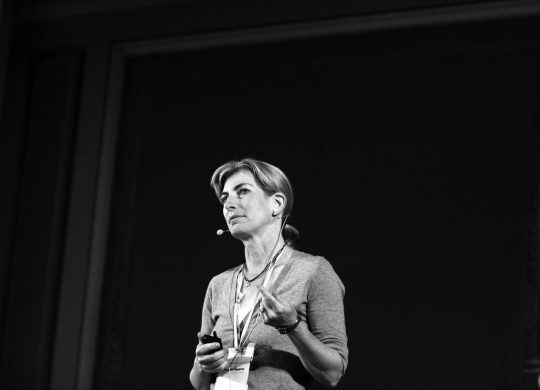
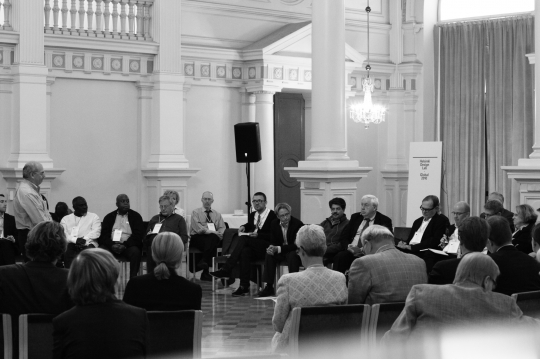

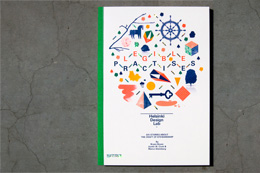
Great summary Rory.
Regarding Niemayer, and working lives, my friend Russell Davies had an interesting thought about what he calls 'the 100-year career'
http://russelldavies.typepad.com/planning/2010/08/5-things.html
It's one of those succinct phrases, and straightforward (if slightly over-simplifying) concepts, that immediately forces you to reconsider what ageing means. And much else besides.
posted by Dan Hill — 4 weeks ago
Thanks Dan, and cheers for the link.
Despite raising the Niemeyer point, I hadn't fully considered what that might mean for a lad like myself in his 20s, with potentially another 80 years in the office - what a simultaneously depressing and liberating thought!
posted by RoryHyde — 4 weeks ago